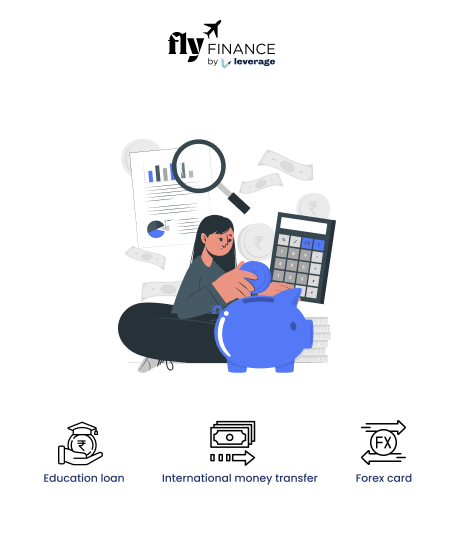In banking, various abbreviations and abbreviations are used for seamless financial transactions. One such commonly used term is TRF. The full form of TRF is “Transfer” in banking. It’s used to describe the movement of funds between accounts within the same bank.
If you have ever noticed “TRF” in your bank statements and wondered what it means, this blog provides a complete understanding of its full form, significance, and how it applies to various banking transactions, including international money transfers.
Table of contents
What is the Full Form of TRF in Banking?
The full form of TRF in banking is “Transfer”. It is a term used to denote the movement of funds from one account to another within the same bank. TRF transactions can occur automatically or manually by a remitter and are commonly used in routine banking operations.
For example-
- If you move funds from your savings account to your current account within the same bank, it will be recorded as TRF.
- If you transfer INR 5,000 to your friend’s account in the same bank, the transaction will show up as TRF.
Benefits of TRF Transactions
TRF transactions offer several advantages that make banking more efficient and convenient. Since they are primarily used for internal fund transfers, they help streamline financial management without requiring third-party payment gateways.
Below are some key benefits of TRF transactions:
Instant Fund Movement: TRF ensures quick and seamless money transfers between accounts within the same bank, making it ideal for managing personal and business finances efficiently.
No Additional Charges: In most cases, TRF transactions are free, unlike NEFT or RTGS, which may have associated fees.
Automated Recurring Payments: TRF simplifies scheduled payments such as loan EMIs, utility bills, and subscription payments, reducing the need for manual intervention.
Efficient Fund Management: By enabling automatic balance adjustments, salary disbursements, and internal branch transfers, TRF plays a crucial role in organized financial planning.
Reduced Dependency on External Systems: Since TRF transactions occur within the same bank, they do not rely on external payment networks, reducing delays and processing time.
Where is TRF Used in Banking?
TRF transactions are widely used in banking for seamless and efficient fund transfers. They are primarily seen in internal bank transfers, where money moves between accounts within the same bank.
TRF is commonly used for self-transfers, loan repayments, automatic balance adjustments, fee deductions, and salary credits processed within the bank’s network. These transactions ensure smooth financial operations without requiring external payment systems like NEFT or RTGS.
- Fund Transfers Between Accounts: When you transfer money between two accounts held in the same bank, it is marked as TRF in your bank statement.
- Loan Repayments: When monthly EMIs are deducted from your account and transferred to the loan account within the same bank, it is reflected as TRF.
- Automatic Balance Transfers: Many banks offer features where surplus funds are automatically transferred to fixed deposit accounts or savings accounts.
- Bank Charges & Fees: If a bank deducts fees, service charges, or penalties from your account, it may appear as a TRF transaction.
- Salary Credits within the Same Bank: If a company processes employee salaries through internal bank transfers, it may be labeled as TRF.
Also Read: Explore Axis Bank International Transfer: Send money abroad in 100+ currencies with low fees & competitive rates.
Types of TRF Transactions
TRF transactions can be classified into different types based on the nature of the transfer.
These include self-transfers between an individual’s accounts, third-party transfers within the same bank, branch-to-branch fund movements, and recurring transfers for scheduled payments like loan EMIs or utility bills.
Each type serves a specific purpose in ensuring seamless internal banking transactions without requiring external payment networks.
- Self TRF: When a customer transfers funds between their accounts (e.g., savings to current account).
- Third-Party TRF: When funds are transferred from one person’s account to another person’s account within the same bank.
- Branch-to-Branch TRF: When money is moved from one branch of a bank to another within the same banking network.
- Recurring TRF: When scheduled transfers occur automatically at regular intervals (e.g., SIPs, loan repayments, utility bill payments).
How is TRF Different from NEFT, RTGS, and IMPS?
TRF is not the same as NEFT, RTGS, or IMPS, as it is limited to internal transfers within the same bank. In contrast, NEFT, RTGS, and IMPS are interbank transfer methods used to send money between different banks.
TRF transactions are usually free and process instantly, whereas NEFT, RTGS, and IMPS may have charges and varying processing times depending on the transfer type and amount.
Check out the differences between NEFT, RTGS, and IMPS and how they are different from TRF.
| Feature | TRF | NEFT | RTGS | IMPS |
| Type | Internal Transfer | Interbank Transfer | Real-Time Transfer | Instant Payment |
| Speed | Immediate | Within 2-3 hours | Real-time | Instant |
| Charges | Free (Mostly) | Low | Higher | Low |
| Availability | 24×7 | Banking Hours | Banking Hours | 24×7 |
Also Read: In this blog, you’ll find all the relevant information on HDFC international money transfer, benefits, information needed and more.
How to Identify a TRF Transaction in Your Bank Statement?
If you see “TRF” in your bank statement, here’s how you can decode it:
- Check the debit or credit entry: If money has been deducted, it could be a fee, charge, or loan repayment. If credited, it could be a salary credit or deposit.
- Look for additional transaction details: Most banks describe along with the TRF entry.
- Contact your bank: If you are unsure about a specific TRF transaction, reaching out to customer support can help clarify.
To sum up, understanding TRF in banking helps individuals and businesses track their transactions better.
Whether used for internal fund transfers, loan repayments, or automated transactions, TRF plays a crucial role in day-to-day banking operations. While it is generally used for domestic transactions, international money transfers within the same banking network may also be labeled as TRF in some cases.
If you are looking for international money transfer solutions, Fly.Finance offers reliable and cost-effective services for students and professionals planning to move abroad.
Stay informed about banking terms and transactions to manage your finances better! Check out the FAQs for more information.
FAQs
TRF stands for “Transfer” and refers to the movement of funds between accounts within the same bank.
A TRF payment is a transaction where money is transferred internally within a bank, either between a customer’s own accounts or to another account in the same bank.
Examples include self-transfers, loan EMI payments, salary credits, branch-to-branch transfers, and bank fee deductions.
TRF transactions are processed automatically or manually by the bank and are usually instant as they occur within the same banking network.
TRF transactions are fast, mostly free, automate recurring payments, and help in efficient fund management.
A TRF amount debited means money has been deducted from your account for a transfer, such as loan repayment, bank fees, or fund movement to another account.
In an SBI account, TRF refers to internal fund transfers, such as money moved between your own accounts or transactions within SBI branches.
The TRF process involves the transfer of funds between accounts within the same bank, either manually by the account holder or automatically by the bank.
Types of transfers include- self-TRF, third-party TRF, branch-to-branch TRF, and recurring TRF for scheduled payments.
No, TRF is used for internal transfers within the same bank, while NEFT, RTGS, and IMPS are used for interbank transfers.
To know more about education loans, the best bank accounts for students, forex and banking experience for global students or international money transfers, reach out to our experts at 1800572126 to help ease your study abroad experience.
| Additional Reads | |
| Full Form of CIBIL | Full Form of NBFC |
| Full Form of KYC | Full Form of POS |
| Full Form of NPA | Full Form of PAN |
| Full Form of CIF | Full Form of EMI |
| Full Form of NACH | Full Form of DPD |
Follow Us on Social Media





























